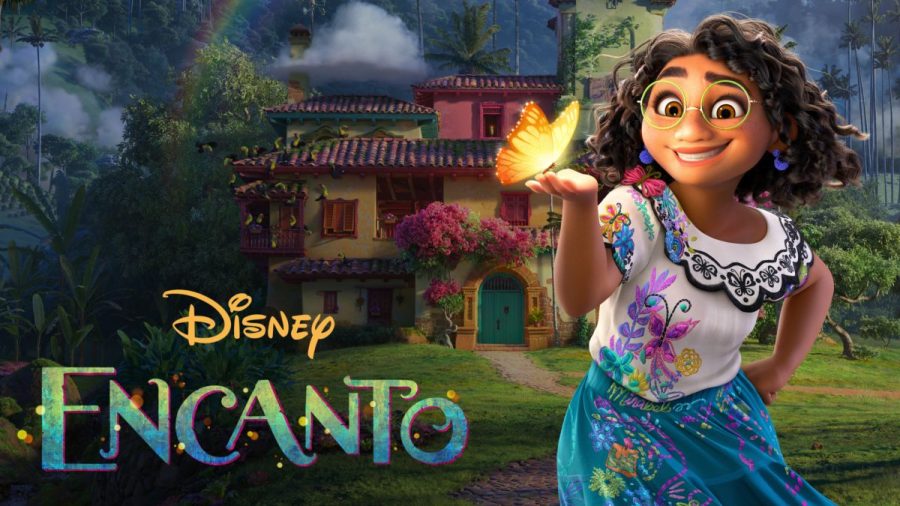Cultural differences in movies should be celebrated, not criticized
Movies like Disney’s “Encanto” are valuable because of the cultural traditions they highlight.
Disney’s “Encanto” was met with very favorable reviews upon its release in late 2021; a story that explores the complexities of family relationships, generational differences, and the subjective meaning of love, many also found it to be a charming display of self-expression, discovery, and acceptance. Most importantly, the movie utilizes an alluring setting and provides an enriching cultural perspective that had only been briefly explored in “Coco” (2017), which unfortunately causes it to fall victim to a common trap.
The film centers around the Madrigals, a Colombian family with extraordinary abilities granted to them through the magic stored in the Encanto—a magical gift created to supplement a sense of stability for a desperate widow and her newborn triplets. The protagonist, Mirabel, is the only member of said family who has not been blessed with her own gift by the Encanto and la casita, but the only one blessed with the agility and skill to protect her family from the dangers of their crumbling magic; she ultimately finds her purpose not in some magically enhanced talent, but in becoming the force that draws her family together.
The plot line itself is simple, yet endearing enough to attract a variety of audiences, and it’s in this fact that we find our most prominent issue with the general reception of this film in the media: the traditions and heritage associated with the Latinx community that are represented in this film are being impeded on, and practically colonized, by viewers who should know better, but don’t.
Shortly after the film’s release to Disney+, I remember reading a comment on social media that claimed that the movie’s “cultural barrier” took away from this viewer’s experience when watching the movie. I found myself completely dumbfounded—I couldn’t even begin to understand the idea that anybody could find this as an inconvenience or a limitation.
As a person of color who has little prior experience with Colombian communities, I was completely fascinated by the incorporation of elements of a culture I wasn’t familiar with. The inclusion of classic Colombian embroidery and weaving techniques, dazzling bright colors, traditional salsa and bachata, and the diversity of skin tones and hair types added a meaning to the film that felt incredibly impactful, even though it went beyond my scope of understanding. Even if it wasn’t written to represent my culture, I felt excited that an underrepresented group finally had its breakthrough in mainstream media. I was fueled by a sense of optimism for the future of representation in film.
While it is my film to enjoy, and it is your film to enjoy, it may not always be our film to truly understand. Of course, everybody is allowed to have their own individual feelings and critiques towards any piece of media they consume based on a variety of factors (plot line, screenwriting, character development, set design, musical and lyrical quality, etc.), but this can’t allow us to strip the movie of its deepest and most important connection to real life society. We must begin to see the problem with people taking it upon themselves to evaluate aspects of a culture that is not theirs, and to leave the assessment of the accuracy of representation to the group that it actually represents.
This has remained a consistent, prolonged issue for decades with all different marginalized groups; with so many cookie-cutter stories with the same cookie-cutter princess and cookie-cutter fairy tale ending, it’s rare that minority communities have the opportunity to embrace a story that reflects the traditions and values that they have been surrounded by their entire lives. We must let them seize this opportunity instead of burying the cultural differences behind a formulaic Disney message.
We must learn to enjoy films like “Encanto” by appreciating cultures that we do not associate with while maintaining a respectful distance from any judgements that are not ours to make; we will not be able to truly honor these cultures as a society until we allow cultural representation to feel less like a barrier and more like basic representation of the different aspects of our combined society. We shouldn’t have to wait for a miracle—we need to learn something from Mirabel and her journey by continuing to push towards ideals of love and unity.

Hi! I’m Alyssa Hillwig. I’m a senior, and this is my second year as part of The Oracle staff. You’ve probably seen me in the hallways and thought...







